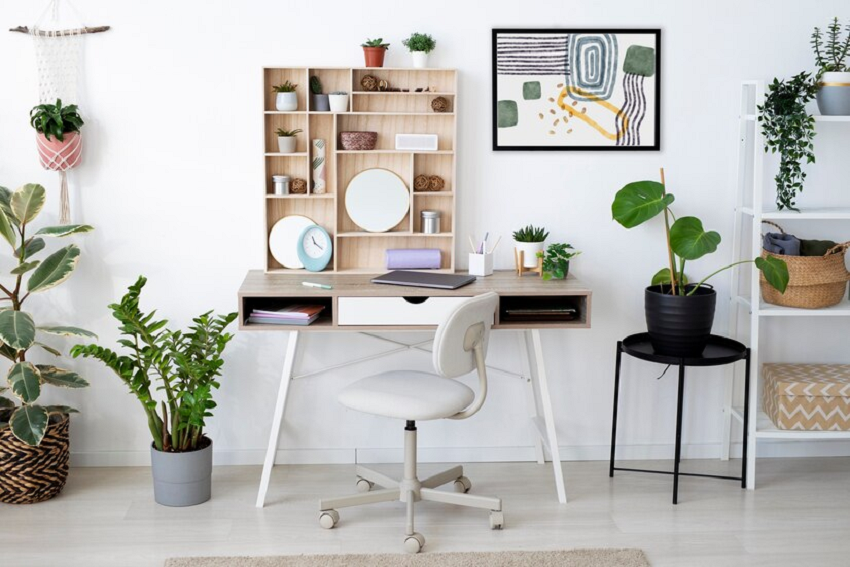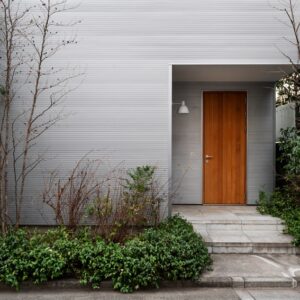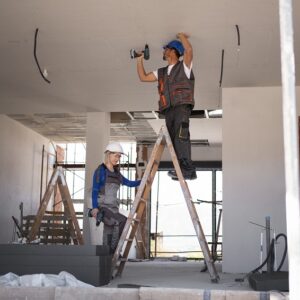The world of work is evolving rapidly, and with it, the spaces we inhabit for our professional endeavours. The integration of work and living spaces is not just a trend but a necessity, as more people embrace remote working. In this article, we delve into the future of workspace design trends in residential architecture, with a special focus on the contributions of Perth architects.
Let’s See the Workspace Design Trends in Residential Architecture
1. Integrating Technology: Smart Homes Meet Smart Workspaces
In the era of digital transformation, technology is a cornerstone of modern workspace design to create a productive workspace for home. Smart homes are now extending their capabilities to include smart workspaces, where technology enhances productivity and convenience. Perth architects are at the forefront, integrating AI, IoT, and smart controls into residential workspaces, creating environments that are not only efficient but also intuitive.
2. Sustainable Design: Eco-Friendly Workspaces in Modern Homes
Integrating Eco-Friendly Workspaces into Contemporary Residences In today’s context, sustainability is not merely an option but a vital requirement. A noteworthy trend in residential architecture is the incorporation of eco-friendly workspaces. These areas are crafted using natural materials, energy-efficient systems, and green spaces, fostering a healthier environment and promoting a more sustainable future.
3. Flexibility and Adaptability: Multi-Use Spaces in Residential Design
The future of workspace design is not just about dedicated office spaces; it’s about creating areas that can adapt to various needs. Multi-use spaces are a key trend, offering the flexibility to transform from a home office to a living area or a creative studio, depending on the requirement of the hour.
4. Biophilic Design: Bringing Nature into Home Workspaces
Biophilic design, which incorporates natural elements into living spaces, is gaining traction in workspace design. This approach not only enhances the aesthetic appeal of a space but also has been shown to improve mental well-being and productivity.
5. Minimalism and Functionality: Streamlining Home Offices
The minimalist trend in home offices focuses on clean lines, uncluttered spaces, and a focus on functionality. This design philosophy helps in creating a workspace that is free from distractions, promoting a more focused and productive work environment.
6. Collaborative Spaces: Designing for Interaction and Creativity
As remote work becomes more prevalent, the need for collaborative spaces within the home increases. These areas are designed to facilitate interaction, brainstorming, and creative processes, essential for those who work in teams, even remotely.
7. Health and Wellbeing: Ergonomic Design in Home Workspaces
Ergonomic design is critical in ensuring the health and wellbeing of individuals working from home. Ergonomic furniture and design principles are being incorporated by a Perth architect to create workspaces that support physical health and enhance comfort.
8. Personalisation: Tailoring Workspaces to Individual Needs
Personalisation is a key trend in workspace design, with spaces being tailored to the specific needs and preferences of the individual. This approach ensures that the workspace is not only functional but also a reflection of the person’s identity and style.
9. Acoustic Design: Managing Sound in Home Workspaces
Effective acoustic design is essential in home workspaces, especially in residential areas where multiple activities occur simultaneously. Sound management through materials and design can significantly enhance concentration and productivity.
10. Lighting Innovations: Enhancing Productivity and Comfort
Lighting plays a crucial role in workspace design. Innovations in lighting technology are being used to create environments that boost productivity and provide comfort, with a focus on natural light and lighting systems that mimic natural rhythms.
11. Colour Psychology: Influencing Mood and Focus in Design
The use of colour in workspace design is not just about aesthetics; it’s about influencing mood and focus. Colour psychology is a key consideration, with hues chosen to create the desired atmosphere and impact on productivity.
12. Local Influence: The Role of Perth Architects in Shaping Trends
Perth architects are playing a significant role in shaping the future of workspace design in residential architecture. Their unique perspective and understanding of local needs and conditions are influencing global trends.
13. Future-Proofing: Adapting to Changing Work Dynamics
Future-proofing workspaces involves designing them to be adaptable to changing work dynamics and technologies. This trend is about creating spaces that can evolve with the times and the changing nature of work.
The Role of Technology in Future Workspace Design
Technology will continue to play a pivotal role in the future of workspace design. From virtual reality to advanced connectivity solutions, technological advancements are set to revolutionise how we work and live.
The Impact of Global Trends on Local Architecture
Global trends in workspace design are influencing local architecture, with Perth architects incorporating these trends into their designs. This fusion of global and local influences is creating unique and innovative workspaces.
Shaping the Future: The Role of Design in Our Work Lives
In conclusion, the future of workspace design in residential architecture is a dynamic and evolving field. It’s about creating spaces that are not only functional and aesthetically pleasing but also sustainable, healthy, and adaptable to the changing nature of work. Perth architects are at the forefront of this evolution, shaping spaces that will define our work lives for years to come.
FAQs on Workspace Design Trends in Residential Architecture
- How is technology influencing modern workspace design in homes?
Technology is revolutionising home workspaces by integrating smart systems for enhanced productivity and convenience. Features like AI, IoT, and automated controls are becoming standard, creating workspaces that are not only efficient but also highly adaptive to individual needs. - What are the benefits of biophilic design in home workspaces?
Biophilic design, which integrates natural elements into workspaces, offers numerous benefits. It improves mental well-being, enhances creativity, and increases productivity. The presence of natural light, plants, and natural materials creates a calming and inspiring work environment. - How can workspace design impact mental health and productivity?
A well-designed workspace can significantly impact mental health and productivity. Ergonomic furniture reduces physical strain, while a well-planned layout can minimise distractions. Additionally, elements like natural light and colour can positively affect mood and focus. - What role do Perth architects play in shaping workspace design trends?
Perth architects are pivotal in integrating global trends with local needs, creating unique and functional workspaces. Their expertise in sustainable and innovative design is influencing how residential workspaces are conceptualised and executed. - How can workspace design be future-proofed?
Future-proofing workspace design involves creating adaptable and flexible spaces that can evolve with changing work dynamics and technological advancements. This includes modular furniture, multi-use spaces, and infrastructure that supports emerging technologies. - What is the impact of global design trends on local architecture in Perth?
Global design trends are significantly influencing local architecture in Perth, leading to a blend of international and local design philosophies. This fusion is evident in the use of sustainable materials, innovative technologies, and a focus on creating spaces that reflect both global standards and local culture.
Conclusion
The future of workspace design in residential architecture is an exciting and evolving field, especially in the context of Perth’s unique architectural landscape. As we have explored, the integration of technology, sustainability, and personalisation are not just trends but necessities in creating spaces that are conducive to the new ways we work.
Perth architects are playing a crucial role in this evolution, bringing a balance of global trends and local needs to the forefront of design. The future of workspace design is not just about creating a space to work; it’s about crafting environments that inspire, adapt, and enhance our lives. As we continue to embrace these changes, our homes will not just be places of residence but also hubs of creativity, productivity, and wellbeing, shaping the way we work and live in the years to come.





